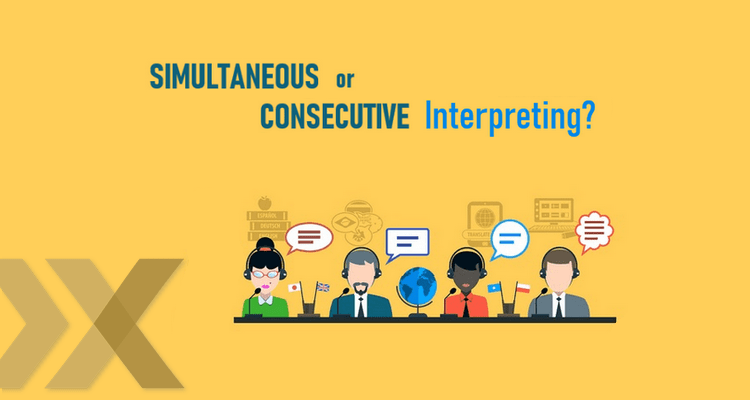
While we tend to compare simultaneous vs consecutive interpretation, they may seem similar but have distinct differences that make one more suitable than the other depending on the situation. Regardless of which method is used, hiring a skilled interpreter is crucial to ensure effective and accurate communication between speakers of different languages.
Let’s now link the two most used interpretations in our today’s topic of blog on “simultaneous vs consecutive interpretation”. We will confer on both types of interpretations and which solution is best suited for your needs.
Simultaneous Interpretation
Simultaneous interpretation is a type of interpretation where the interpreter translates the speaker’s words into another language in real-time. This means that while the speaker is still talking, the interpreter is
translating the words into the target language. The interpreter uses specialized equipment, such as a headset and a microphone, to listen to the speaker and translate the words simultaneously. The translated words are then broadcast to the audience through headphones. Simultaneous interpretation is a great solution for large events, such as conferences or seminars. Especially, where the audience consists of people who speak different languages. I allows the event to continue uninterrupted, and the audience can listen to the speaker in their own language. Simultaneous interpretation requires skilled interpreters who can keep up with the speaker’s pace and understand complex language structures. It also requires specialized equipment and a soundproof booth for the interpreters to work in.
Consecutive Interpretation 
Consecutive interpretation, is a type of interpretation where the interpreter translates the speaker’s words after the speaker has finished talking. In this type of interpretation, the speaker talks for a short period, pauses, & then the interpreter translates the words into the target language. This process continues until the speaker has finished their speech.
Consecutive interpretation is best suited for small meetings, such as business negotiations or one-on-one conversations. It allows the speaker & the interpreter to have a dialogue, and the interpreter can clarify any points that the speaker may have missed.
Consecutive interpretation requires skilled interpreters who can remember and translate the speaker’s words accurately. It does not require any specialized equipment and can be done in any setting.
 Which Solution Best Fits Your Needs?
Which Solution Best Fits Your Needs?
Now that we have discussed both simultaneous vs consecutive interpretation, you may be wondering which solution is best suited for your needs. The answer to this question depends on several factors, including the nature of the event, the number of participants, and your budget. For large events, such as conferences or seminars, simultaneous interpretation is the best solution. This type of interpretation allows the event to continue uninterrupted, and the audience can listen to the speaker in their own language. However, simultaneous interpretation is more expensive than consecutive interpretation, as it requires specialized equipment and skilled interpreters.
For small meetings, such as business negotiations or one-on-one conversations, consecutive interpretation is the best solution. This type of interpretation allows the speaker and the interpreter to have a dialogue, and the interpreter can clarify any points that the speaker may have missed. Consecutive interpretation is less expensive than simultaneous interpretation and does not require any specialized equipment.
It’s important to note that both types of interpretation require skilled interpreters who can accurately translate the speaker’s words. Hiring a professional interpreter is essential to ensure that the interpretation is accurate and that the communication is effective.
Conclusion
In conclusion, comparing our components of discussion, “simultaneous vs consecutive interpretation”, its deduced that these two types of interpretation are commonly used in modern communication. Simultaneous interpretation is best suited for large events, such as conferences or seminars, where the audience consists of people who speak different languages. Consecutive interpretation, on the other hand, is best suited for small meetings, such as business negotiations or one-on-one conversations. The choice of which solution to use depends on several factors;
- The nature of the event
- The number of participants
- The budget
Choosing amid simultaneous vs consecutive interpretation depends on the type of event and the size of the audience. However, hiring a professional interpreter is essential to ensure that the interpretation is accurate and that the communication is effective.



 Which Solution Best Fits Your Needs?
Which Solution Best Fits Your Needs?